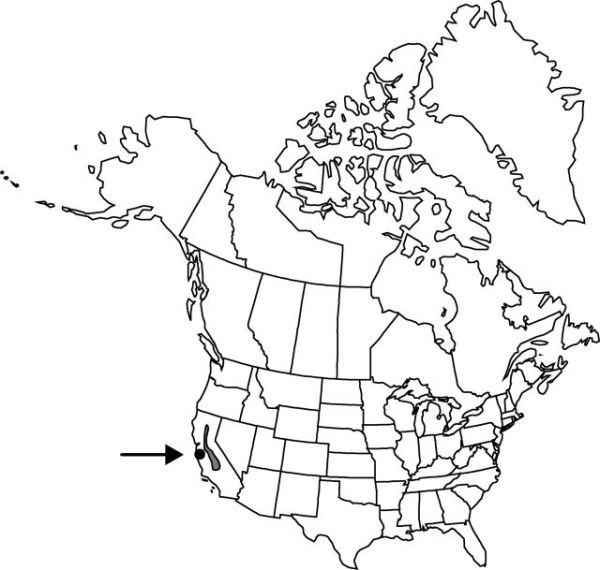Difference between revisions of "Allium hyalinum"
Bull. Calif. Acad. Sci. 1: 155. 1885.
FNA>Volume Importer |
imported>Volume Importer |
||
| (6 intermediate revisions by 2 users not shown) | |||
| Line 6: | Line 6: | ||
|place=1: 155. 1885 | |place=1: 155. 1885 | ||
|year=1885 | |year=1885 | ||
| + | }} | ||
| + | |special_status={{Treatment/ID/Special_status | ||
| + | |code=F | ||
| + | |label=Illustrated | ||
| + | }}{{Treatment/ID/Special_status | ||
| + | |code=E | ||
| + | |label=Endemic | ||
}} | }} | ||
|basionyms= | |basionyms= | ||
| Line 23: | Line 30: | ||
|elevation=50–1500 m | |elevation=50–1500 m | ||
|distribution=Calif. | |distribution=Calif. | ||
| − | |discussion=<p>Allium hyalinum is known from the Sierra Nevada foothills and inner south Coast Range.</p> | + | |discussion=<p><i>Allium hyalinum</i> is known from the Sierra <i>Nevada</i> foothills and inner south Coast Range.</p> |
|tables= | |tables= | ||
|references= | |references= | ||
| Line 32: | Line 39: | ||
-->{{#Taxon: | -->{{#Taxon: | ||
name=Allium hyalinum | name=Allium hyalinum | ||
| − | |||
|authority=Curran | |authority=Curran | ||
|rank=species | |rank=species | ||
| Line 46: | Line 52: | ||
|publication title=Bull. Calif. Acad. Sci. | |publication title=Bull. Calif. Acad. Sci. | ||
|publication year=1885 | |publication year=1885 | ||
| − | |special status= | + | |special status=Illustrated;Endemic |
| − | |source xml=https:// | + | |source xml=https://bitbucket.org/aafc-mbb/fna-data-curation/src/2e0870ddd59836b60bcf96646a41e87ea5a5943a/coarse_grained_fna_xml/V26/V26_489.xml |
|genus=Allium | |genus=Allium | ||
|species=Allium hyalinum | |species=Allium hyalinum | ||
Latest revision as of 22:15, 5 November 2020
Bulbs generally 2–20+, increase bulbs absent or ± equaling parent bulbs, never appearing as basal cluster, not clustered on stout primary rhizome, ovoid to ± globose, 0.5–1.2 × 0.5–1.2 cm; outer coats enclosing 1 or more bulbs, gray-brown to brown, prominently cellular-reticulate, membranous, cells arranged in ± vertical rows, forming irregular herringbone pattern, transversely elongate, ± wavy, V-shaped, without fibers; inner coats yellow or white, cells obscure, arranged in vertical rows, forming a herringbone pattern or contorted, V-shaped. Leaves persistent, withering from tip by anthesis, 2–3, basally sheathing, sheaths not extending much above soil surface; blade solid, subterete or ± channeled, not carinate, 7–40 cm × 1–3 mm, margins entire. Scape persistent, solitary, erect, solid, terete, 15–45 cm × 2–4 mm. Umbel shattering after seeds mature, each flower deciduous with its pedicel as a unit, erect, loose, 5–25-flowered, hemispheric, bulbils unknown; spathe bracts persistent, 2, 3–5-veined, lanceolate to lance-ovate, ± equal, apex acuminate. Flowers stellate, 6–10 mm; tepals spreading at anthesis, white to pink, lance-ovate to broadly ovate, ± equal, becoming hyaline and connivent over capsule, margins entire, apex obtuse to rounded; stamens included; anthers yellow or purple; pollen yellow; ovary crestless; style linear, equaling stamens; stigma capitate, scarcely thickened, unlobed; pedicel 10–35 mm. Seed coat dull; cells minutely roughened. 2n = 14.
Phenology: Flowering Mar–May.
Habitat: Heavy, clay soils on shaded slopes
Elevation: 50–1500 m
Discussion
Allium hyalinum is known from the Sierra Nevada foothills and inner south Coast Range.
Selected References
None.

